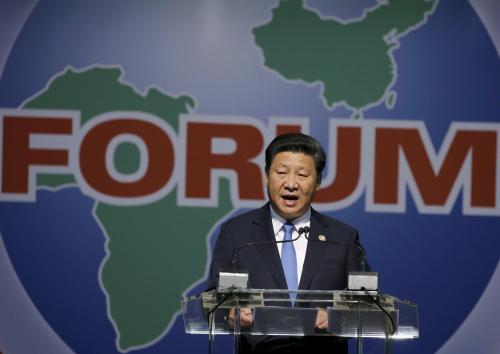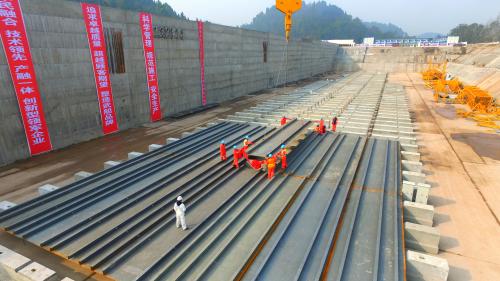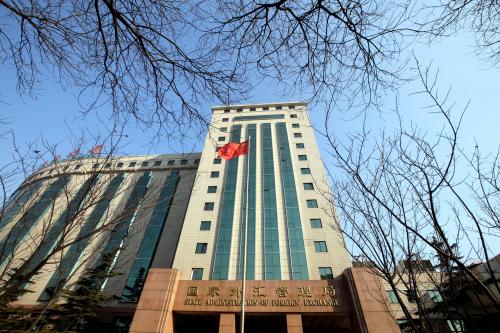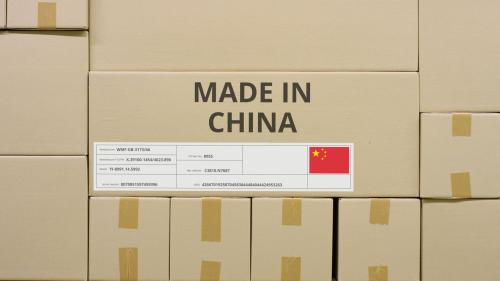Content from the Brookings-Tsinghua Public Policy Center is now archived. Since October 1, 2020, Brookings has maintained a limited partnership with Tsinghua University School of Public Policy and Management that is intended to facilitate jointly organized dialogues, meetings, and/or events.
China has announced that it will restrict domestic companies from making overseas investments in sectors such as real estate, hotels, entertainment, and sports clubs. David Dollar explains how the new rules might affect the U.S. economy and the global economy. This piece originally appeared on The Hill.
Last Friday, China announced that it would restrict domestic companies from making overseas investments in sectors such as real estate, hotels, entertainment, and sports clubs.
The notice criticized “irrational” investment trends by Chinese companies while indicating support for investments in natural resources and along the “One Belt, One Road” corridors. The effort is aimed at managing the overall net outflow of capital from China, as well as the composition of the outflow in terms of sectors and countries.
China has a very high savings rate and diminishing investment opportunities at home because it has built up excess capacity in heavy industry, real estate and infrastructure. It is natural for some Chinese capital to look for investment opportunities abroad as returns at home decline. The Chinese authorities support this capital outflow, but they want to limit the net outflow to be roughly equal to their current account surplus of about $200 billion per year.
With such balance, both the level of reserves and the value of the currency will be relatively stable. During 2015 and into 2016, capital outflows were excessive, putting downward pressure on the currency and leading to the loss of $1 trillion in reserves. But China has apparently found a sweet spot over the past 12 months as capital outflows moderated to a sustainable level.
Reserves have stabilized in the $3-trillion range, and have in fact increased modestly in recent months. China’s trade-weighted exchange rate has been stable as well. The yuan-dollar rate has actually appreciated because the dollar has been on a downward trend globally. This stability has been in place for some months.
What was new about the announcement last week is the effort to more strictly manage the composition of the capital outflow. The No. 1 destination of Chinese capital has been the U.S. That is not likely to change. But some of the purchases have been hotels, real estate and movie theaters. The announcement indicates that these will now be disfavored.
But many Chinese acquisitions have been in high-tech sectors and natural resources. Some of the high-tech takeovers have been stopped by the federal government on national security grounds, but most deals go through. It is likely that these kinds of investments from China will continue.
The overall flow from China to the United States is too small to have a macroeconomic effect, so the Chinese restrictions should have minimal effect on our economy overall. However, some local real estate markets, such as San Francisco, may feel the effect of diminished Chinese activity.
Another important element of China’s capital outflow has been loans to developing countries to build infrastructure, primarily in transport and power. The loans come from China Development Bank (CDB) and China Export Import Bank. The two together have outstanding foreign currency loans of $675 billion. China is not very transparent about the amount of loans to different countries or the terms of the loans.
It seems that in recent years, China is lending $70 to $80 billion per year for these kinds of projects. The announcement last week signals that the authorities want to maintain this capital outflow.
Up until now, only a minority of China’s infrastructure financing has been going to countries along [One Belt, One Road].
One aspect of this is the One Belt, One Road initiative, fostering deeper integration, primarily through infrastructure construction, along the ancient overland Silk Road from China to Europe as well as along a “maritime road”—the shipping lanes from China through the South China Sea and the Indian Ocean on to Europe.
Up until now, only a minority of China’s infrastructure financing has been going to countries along these routes. About one-third of the overseas lending by CDB and EXIM has gone to belt and road countries. China has financed more infrastructure in Africa than along the belt and road, and a significant amount in Latin America as well.
Some countries along the belt and road, such as Iran and Pakistan, are borrowing significant amounts from China, but other countries have shown little interest. China’s financing of infrastructure in the developing world is significant, but it does not follow any clear geographic pattern. So far, the lending seems more demand driven, by which countries want to borrow from China, than supply driven by a Chinese masterplan.
In summary, the new restrictions announced by China on its companies investing abroad reflect both the country’s macroeconomic policy as well as its industrial policy. China wants an overall outflow of capital that leaves reserves and the exchange rate stable. It also wants to micro-manage the outflow to favor hi-tech, natural resources and construction of infrastructure.
The Brookings Institution is committed to quality, independence, and impact.
We are supported by a diverse array of funders. In line with our values and policies, each Brookings publication represents the sole views of its author(s).








Commentary
China’s new investment rules
August 23, 2017